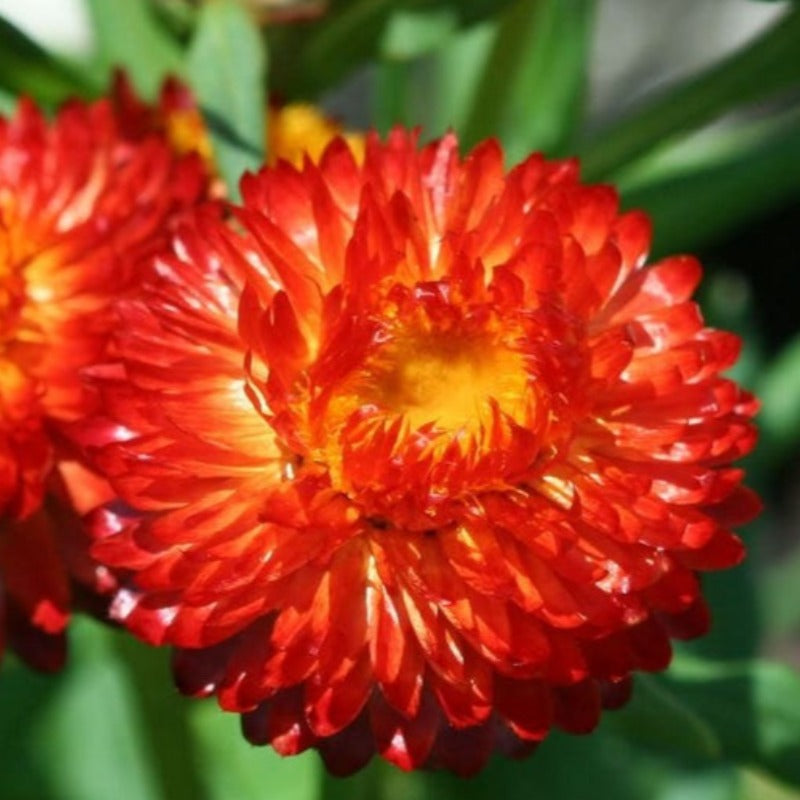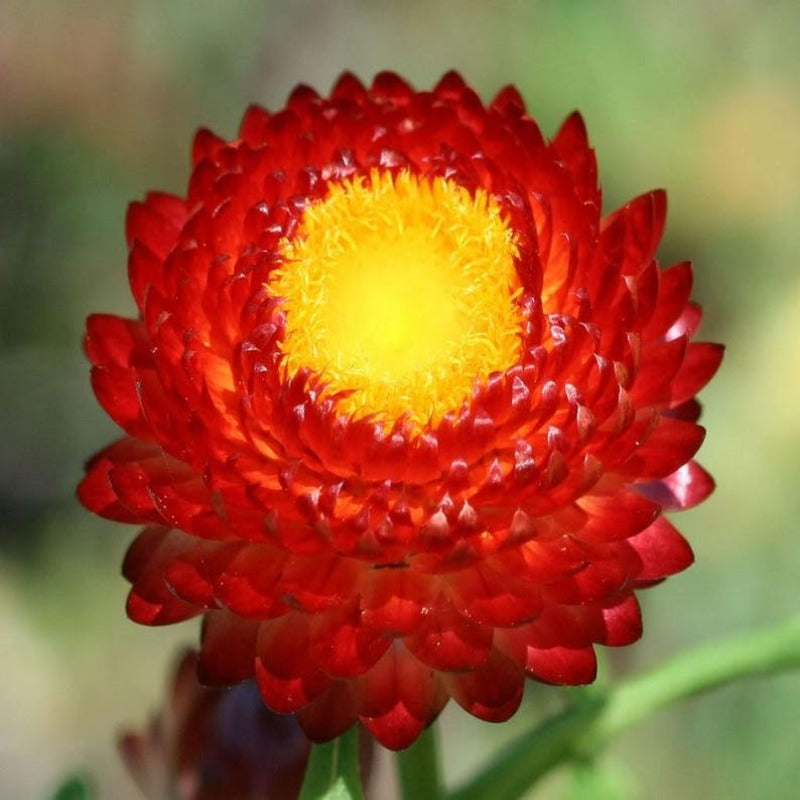- Historical context: Strawflowers, also known as everlasting flowers, have been cultivated for their unique ability to retain color and shape when dried. The 'Fire Ball' variety is a more recent cultivar developed for its vibrant red hues.
- Geographical origination: Strawflowers are native to Australia, where they grow in a variety of habitats including grasslands and open forests.
- Relevant cultural significance: Strawflowers have been used in dried flower arrangements and crafts for centuries due to their long-lasting nature. The 'Fire Ball' variety is particularly popular in ornamental gardening and floral design.
- Time period of discovery: The exact time period of the 'Fire Ball' variety's development is not well-documented, but strawflowers have been known and used since the 19th century.
- Original habitat: Open forests and grasslands in Australia.
- Notable historical uses: Used in dried flower arrangements, wreaths, and other decorative crafts.
- Ideal temperature range: Strawflowers thrive in temperatures between 65-75°F (18-24°C).
- Soil type: Well-draining, sandy or loamy soil with a pH between 6.0 and 7.5.
- Sunlight requirements: Full sun is essential for optimal growth and flowering.
- Watering needs: Moderate watering; allow the soil to dry out between waterings to prevent root rot.
- Planting season: Plant seeds in early spring after the last frost, or start indoors 6-8 weeks before the last frost date.
- Germination time: Seeds typically germinate within 7-14 days.
- Growth cycle duration: Strawflowers are annuals, completing their life cycle in one growing season.
- Common pests and diseases: Aphids, spider mites, and powdery mildew can be issues. Regular monitoring and appropriate treatments are recommended.
- Companion planting advice: Companion plants include marigolds, zinnias, and cosmos, which can help attract beneficial insects.
- Common challenges and solutions: Overwatering can lead to root rot. Ensure well-draining soil and moderate watering. Pests like aphids can be managed with insecticidal soap or neem oil.
- Nutritional values: Not applicable as strawflowers are primarily ornamental and not consumed.
- Health benefits: Not applicable for direct health benefits as they are not used medicinally.
- Culinary uses: None, as strawflowers are not edible.
- Medicinal uses: Strawflowers are not commonly used in traditional medicine.
- Other unique advantages: Long-lasting beauty: Strawflowers retain their color and shape when dried, making them ideal for crafts and decorations.
Low maintenance: They are relatively easy to grow and require minimal care once established.
Attracts pollinators: The bright flowers attract bees and butterflies, supporting local ecosystems.






